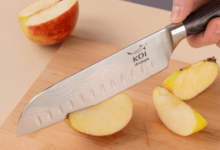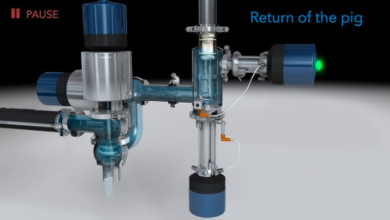Are Watch Winders Necessary? Debunking Common Myths and Misconceptions

Ever wondered about those fancy boxes that rotate watches in stores? Those are watch winders, and they’ve become increasingly popular among watch enthusiasts. But are they really necessary for your timepiece collection?
The truth is, there’s a lot of confusion surrounding watch winders. Some folks believe they’re essential for keeping your watch healthy, while others see them as a luxurious extra. In this guide, we’ll debunk some common myths and misconceptions about watch winders, so you can decide if one is right for you.
Understanding Automatic Watches
Before we dive into winders, let’s understand how automatic watches work. Unlike their quartz counterparts that rely on batteries, automatics are mechanical marvels. They use the natural movement of your wrist to wind a mainspring, which stores power and keeps the watch ticking.
When you’re not wearing your automatic watch, the mainspring gradually loses power, and the watch eventually stops. That’s where watch winders come in.
What is a Watch Winder?
A watch winder is essentially a motorized stand that rotates your automatic watch, mimicking the movement of your wrist. This keeps the mainspring wound and the watch running, even when you’re not wearing it.
Watch Winders Prevent Damage
One common myth is that watch winders are essential to prevent damage to your watch’s intricate mechanics. High-quality automatic watches are built to withstand periods of inactivity. Most manufacturers recommend simply wearing the watch regularly or winding it manually when it stops.
Constant movement in a winder might even cause unnecessary wear and tear on some components. The rotor (the part that winds the mainspring) and lubrication system could experience extra strain. So, if your watch doesn’t require frequent winding, rely on manual winding or wear it regularly.
Watch Winders Extend Lifespan
Another misconception is that winders significantly extend the life of your automatic watch. While keeping a watch wound prevents the need for constant restarting, it doesn’t replace regular servicing.
A watch service involves a detailed inspection, cleaning, and lubrication of the movement – something a winder can’t replicate. Stick to the recommended servicing schedule provided by your watch manufacturer to ensure your timepiece runs smoothly for years to come.
So, When Are Watch Winders Useful?
Now that we’ve debunked some myths, let’s explore situations where watch winders can be beneficial:
Multiple Watch Collections: If you own a collection of automatic watches that you rotate frequently, a winder can keep them all wound and ready to wear. This saves you the hassle of manually winding each one before you slip it on.
Rarely Worn Watches: Do you have a cherished heirloom watch you only wear for special occasions? A winder can ensure it’s always ready to go, preventing the need to set the time and date each time you wear it.
Travel: Traveling can disrupt your normal routine, and you might not wear your watch every day. A travel watch winder can keep it running smoothly while you’re on the go.
Choosing the Right Watch Winder
If you’ve decided a watch winder is right for you, here are some factors to consider when choosing one:
Number of Watch Slots: Consider how many watches you want to wind at once. Some winders have compartments for a single watch, while others can accommodate several.
Rotation Programs: Many winders offer customizable rotation programs. You can choose the direction, duration, and intervals between rotations to mimic your natural wrist movement as closely as possible.
Power Source: Winders come in AC-powered and battery-operated options. AC-powered winders are more reliable, while battery-powered ones offer portability.
Noise Level: Some winders can be noisy, especially if you plan to keep them in your bedroom. Look for models with quiet operation.
Material and Design: Watch winders come in various styles and materials to complement your taste and décor. Leather, wood, and carbon fiber are popular choices.
Beyond the Basics: Watch Winder Care Tips
Here are some additional pointers for using your watch winder effectively:
Consult Your Watch Manual: Always check your watch manufacturer’s recommendations on watch winders. Some delicate watches might not be suitable for constant movement.
Rotate Your Watches: Even with a winder, it’s a good idea to wear your watches occasionally to ensure the lubricants are distributed evenly.
Clean Your Winder Regularly: Dust buildup inside the winder can affect its performance. Use a soft, dry cloth to clean it periodically.
The Final Word on Watch Winders
Watch winders are a convenient accessory for watch enthusiasts, but they’re not a necessity for everyone. If you own a single automatic watch that you wear regularly, you can probably skip the winder. However, if you have a collection or a rarely-worn heirloom, a winder can be a worthwhile investment.
By understanding the myths and choosing the right winder for your needs, you can ensure your automatic watches stay running smoothly and remain cherished timepieces for years to come.
Beyond Watch Winders: Caring for Your Automatic Watch
Here are some additional tips for maintaining the health of your automatic watch, regardless of whether you use a winder:
Develop a Wearing Routine: Try to wear your watch regularly to keep the mainspring naturally wound. Even a few hours of wear can make a difference.
Manual Winding: Most automatic watches have a crown that you can use to wind the mainspring manually. Consult your watch manual for specific instructions.
Setting the Time and Date: When your watch stops, you’ll need to reset the time and date. This process can vary depending on your watch model, so refer to the manual for guidance.
Regular Servicing: As mentioned earlier, regular servicing is crucial for the long-term health of your automatic watch. A professional watchmaker will clean, lubricate, and inspect the movement, ensuring it continues to function flawlessly. The recommended service interval can vary depending on the watch and how often you wear it, but typically ranges from 3-5 years.
Conclusion
Automatic watches are marvels of engineering, and with proper care, they can last a lifetime. By understanding how they work, following these simple tips, and deciding if a watch winder is right for you, you can ensure your timepiece continues to tick for generations to come.
Happy Winding (or Wearing)!
We hope this comprehensive guide has helped you navigate the world of watch winders and automatic watch care. If you have any further questions, feel free to leave a comment below, and we’ll be happy to assist you.





